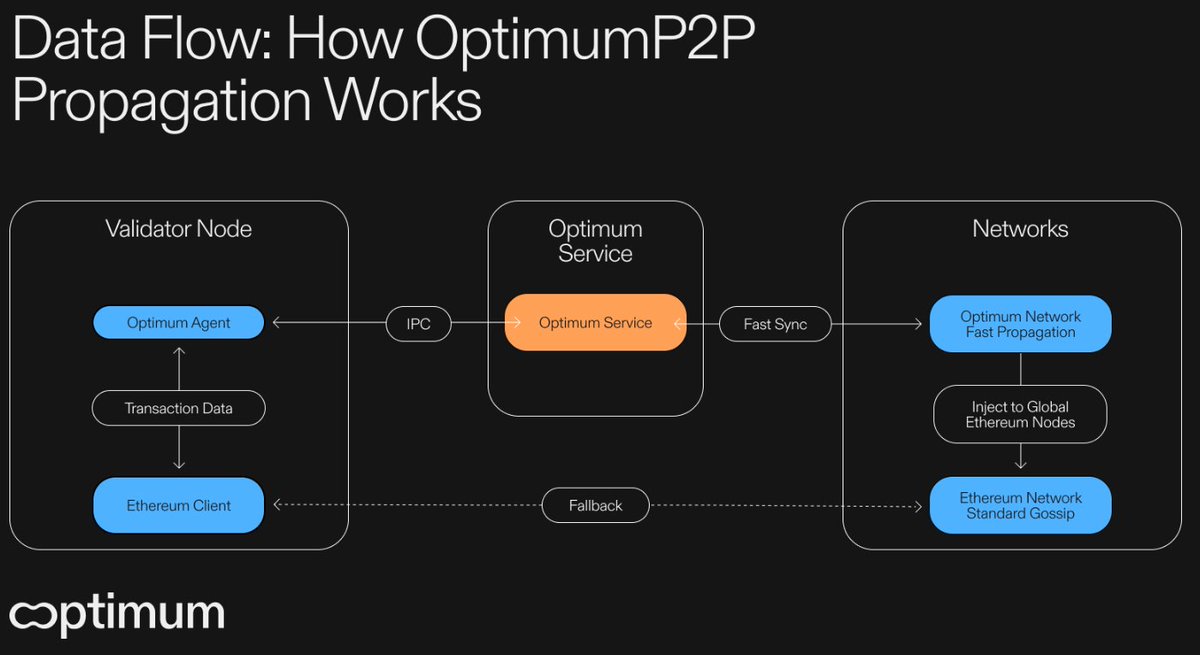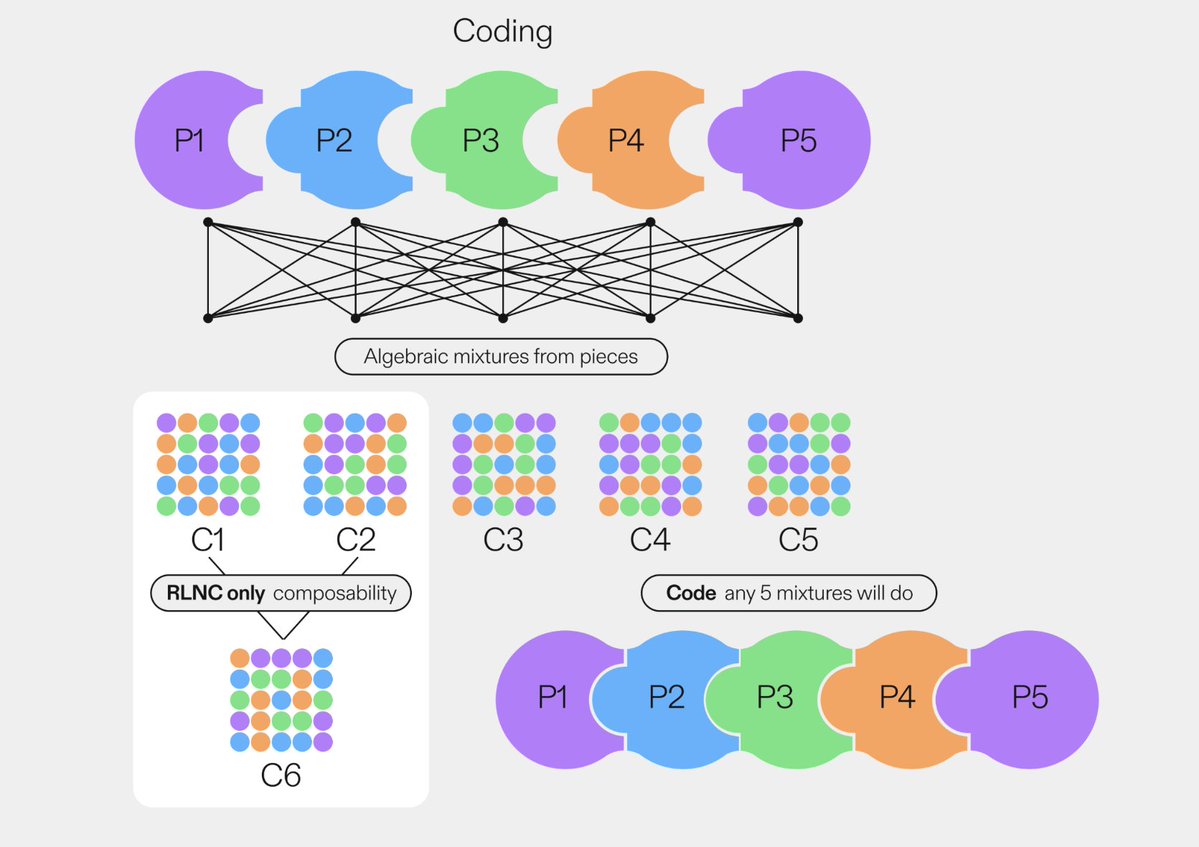Optimum Decentralized Computing Memory Layer
Its goal is to build the missing memory layer for Web3, primarily consisting of two product components: Optimum P2P and Decentralized Random Access Memory (DeRAM). It appears to be a valuable infrastructure layer project, especially Optimum P2P; the use case for DeRAM is not very clear. DeRAM implements a decentralized subscription protocol based on a pub/sub model, supporting storage, which seems similar to the web2 pub/sub protocol. Here, I will mainly introduce the Optimum P2P part.
Optimum P2P Principle:
Optimum P2P accelerates transmission and optimizes the propagation speed of the P2P layer through a technology called Random Linear Network Coding (RLNC), which scatters and shards data for transmission and then reconstructs it. It has two services running on the node side, working in sync with various blockchain nodes.
All received blocks will be fetched by the Optimum Agent from the validators. The Optimum Agent is a software running on the validator's machine that can directly read data from the validator's Ethereum client. Block data will be passed to the Optimum Service, which is an adjacent software on the validator's machine, and then it will be broken down into small encoded shards (using RLNC) and sent to other nodes. Once a node receives enough shards, it can reconstruct the complete block, but even before the complete block is reconstructed, the node can start forwarding any received shards to the next node. This is one of the special properties of RLNC, making it very useful for fast data propagation. Besides block propagation, Optimum P2P can also be used for faster transaction relaying from RPC nodes to the memory pool, as well as faster blob propagation.
Optimum is a decentralized flexnodes network that anyone can run and connect to any blockchain without permission.
Main Value Points:
For Validators: Accelerates data propagation, reduces operational costs, increases APY and MEV income.
For L1 and L2 Blockchains: Faster block propagation, reduced bandwidth consumption, and optimized storage.
For dApp Developers: Improved transaction relaying and prioritization, supporting latency, throughput, and cost-sensitive applications.
For End Users: Faster transactions and more responsive interfaces, enhancing user experience.
Team:
Professor Muriel Médard (Co-founder)
Director of the Software Science and Engineering Department at MIT, co-inventor of Random Linear Network Coding (RLNC).
Dr. Kishori Konwar (Co-founder)
Former Senior Engineer and Scientist at Meta, MIT postdoc, previously a quantitative developer at Goldman Sachs.
Kent Lin (Co-founder)
Former partner at GSR Ventures, co-founder of Plug and Play Crypto.
Funding:
Raised $11 million in seed funding.
The seed round was led by 1kx, with participation from Robot Ventures, Finality Capital, Spartan, CMT Digital, SNZ, Triton Capital, Big Brain, CMS, Longhash, NGC, and others.
Participation Method:
Validator Nodes:
Early members can participate via Discord:
Show original

14.99K
16
The content on this page is provided by third parties. Unless otherwise stated, OKX is not the author of the cited article(s) and does not claim any copyright in the materials. The content is provided for informational purposes only and does not represent the views of OKX. It is not intended to be an endorsement of any kind and should not be considered investment advice or a solicitation to buy or sell digital assets. To the extent generative AI is utilized to provide summaries or other information, such AI generated content may be inaccurate or inconsistent. Please read the linked article for more details and information. OKX is not responsible for content hosted on third party sites. Digital asset holdings, including stablecoins and NFTs, involve a high degree of risk and can fluctuate greatly. You should carefully consider whether trading or holding digital assets is suitable for you in light of your financial condition.

